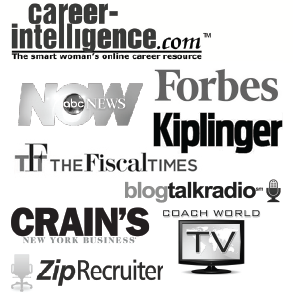
Jun 6, 2014 | coaching, confidence, critical thinking, gender roles in business, leadership, women
Lots of recent discussion about what I’ve long referred to as the confidence conundrum — how much is enough, how much is too much, how do we get it, why does he/she have it and I don’t— particularly as it pertains to women in leadership. While this is certainly not a new topic, two national journalists have written a book hoping to “crack” the “confidence code”…once and for all. See an overview here: Journalists Kay and Shipman urge women to close the confidence gap. Not that simple. Despite ongoing efforts to capture it, achieving a state of balanced confidence continues to elude even the smartest and most successful. Which is why hot and cold running trainers and coaches have created a self-perpetuating industry of quick fix offerings that a) capitalize on fear and b) never get at the more fundamental issues, the true drivers of authentic and sustainable confidence. In fact, their approach is merely palliative and therefore short-lived: they drill women on using bolder verbiage, on deploying more assertive body language, on acting ‘as if;’ indeed, all are legitimate interventions and confidence boosters** but are also wholly insufficient. The problem and why it persists, I submit, is that we’ve been thinking and going about this all wrong. In 2013, I was asked to address the East Tennessee Women’s Leadership Summit on this very topic and had the distinct privilege of shaking up the status quo with an original and innovative paradigm: basically, confidence isn’t a commodity to be bought, sold, borrowed, loaned or lusted after and there simply is no code to break. Instead, it’s a constellation of...

May 14, 2014 | coaching, critical thinking, networking, Uncategorized
I’m often asked to train leaders, board members, and teams on the topic of personal branding and networking, subjects I’m happy to simplify for my clients. However, in order to make an impact in this particular arena of professional development, I must first reveal a sometimes unwelcome truth: The art of creating a personal brand and building sphere of influence offers no legitimate short cuts. Even considering the speed at which business moves today, incremental and deliberate is still the way to go when developing a compelling brand and a powerful network. A strong personal brand isn’t something academic or hypothetical you fabricate in a closed room with your resume, a notebook and personal coach. It’s built over time, from the inside-out, and is the culmination of how you choose to conduct yourself in the boardroom, in client meetings, and when representing the firm at your industry meetings. And it’s the strong, authentic personal brand lived consistently that is the key to building a meaningful and influential network. Of course, there will always be those who promote the quick, far and wide method of building your network, amassing names of “contacts” and reducing your personal brand to a 30 second elevator pitch. But this does little to foster deep connections and a curated network, the stuff of influence. And, because influence is the currency of business, I’ll continue to bypass the shortcut in favor of the longer but more scenic...

Apr 10, 2014 | coaching, critical thinking, leadership
Mentoring — while a popular buzz word in the halls of corporate America today — is actually a very old concept, referring to a teaching technique previously reserved for the few and the special. However, in response to the fast pace, intense competition and complexities of business, mentors and proteges alike, have significantly diluted the mentoring process into something that lacks the power, impact and effect it once implied. To reinvigorate your own mentoring program, and plan for its possibilities and limits, it’s critical that you approach the process through a different lens. Let’s start with a basic definition. Building an impactful mentoring program or being an effective mentor is a delicate dance, more complex than the standard, yet unofficial definition of the term, making mentorship synonymous with brain-dumping information, fixing people, or making connections. While leaders are often fine with the teaching / advising function of mentoring, the true impact is made when the mentor adopts the Indo-European derivation of the word, meaning “to think.” The best, most enduring gift Mentors can give their proteges is to get them to think. Effective mentors teach, yes, but more importantly, they question and challenge their protoges to deploy the knowledge they’ve gained, see patterns, connect the dots, make inferences and solve problems. If you’re reading this and your own mentoring relationship or mentorship program appears to lack the power and results you initially imagined, remember that the best, most sustainable, and most applicable learning is experiential. Encourage your leaders in mentoring roles to: Ask more questions; – Avoid being overly prescriptive – Expect the protoge’s interest, commitment and energy to match...

Jan 17, 2014 | critical thinking, gender roles in business, leadership, women
2015 Update: After reading this article below, take a peak at my updated article, “The ALL Gender Solution,” which you can find here. I refuse to allow the dtkunplugged digital presence to digress into a place of complaints absent solution, so I won’t go into how long I’ve been creating a blended leadership model to serve us well as we face the global realities of the 21st Century. However, it was in early 2013 when I started to hear my words return poignant echoes, with significant reach. And it has been gratifying to see the conversation finally getting out of the “yes, but” phase and into this “yes, and” phase, where progress can be made. While some may still be stuck in very old thinking and argue to the contrary, men and women are different. We have different wiring and different innate strengths, but the blending of the best of each will can only create something that’s better than the sum of the parts. This blended leadership model — which is an important part of what I call the Two-Gender Solution — has always been my objective in the work I do both individually and corporately. It’s what I believe will ultimately generate the best results all around. This new, men/women inclusive conversation is critical and it requires an inclusive vision from the top, especially in male-dominated industries and sectors. But, while engaging/recruiting evolved men in power is certainly key to initiating change, change will continue to be slow… Unless… We rightfully have trained a lot of attention on how we can better socialize our daughters to prepare them...

Aug 14, 2013 | coaching, critical thinking, leadership, Uncategorized
For my entire career, I have known that one of the most critical values I offer organizations is being able to marry the 10,000 foot, future-facing view with a boots on the ground approach. In a business world that works quarter to quarter, the larger, more contextual view is often lost, and with it — an organization’s ability to plan deliberately, work lean and succeed in the short and long term. So, I was relieved when I read Elaine Varelas’ article in Chief Learning Officer on June 3, 2013. She titled the article “How to Keep the Next Generation of Leaders“ and while I encourage you to read it at your leisure, her most applicable point — simplified — was the need for leaders who take a long-term view. I agree that this 10,000 foot view is critical for retaining talent, but it is equally critical for navigating change, shifting a culture, and maintaining (or building) profitability. I’ve included a snippet of my original comment to the author below, and would love your thoughts. What do you think businesses miss when they lead and manage by the quarter vs. taking this long-term approach? “We live in a time where the only thing that’s certain is uncertainty. Evolved leaders must know how to maintain and communicate vision and also be agile (and hubris-less) enough to course correct in real time, all while creating an engaged workforce.”–...
Jun 3, 2013 | critical thinking, entreprenuers
Everywhere you turned this past week, there was some article or another discussing the significance of and reverence for July 4. And rightly so, as it’s been said that the collaborative work product of our Founding Fathers formed the basis of a most compelling political system. Plus, it’s an inclusive celebration — definitely not a contrived Hallmark event — shared by all Americans. So, we again celebrated our war for independence which largely was about our mission as a new country to differentiate ourselves from the thinking and systems of Britain. While technically “rebels,” the Founding Fathers were not impetuous, anarchic or undisciplined in arriving at a decision and then acting: they were thinkers, and deep thinkers at that, reading, writing, discussing and debating until they were ready to do the real work of nation building. They studied all forms of government, sourcing the Ancients as well as the Enlightenment philosophers, to get their best understanding of the tensions between individual freedoms and protection of the collective good. Those particular tensions still exist in the political conversation but interestingly, they’re now coming to bear in the world of business. Same tensions but much different context: again citing Daniel Pink, we’ve progressed from the Knowledge Age to the Conceptual Age. At one time, not long ago, knowledge was proclaimed king and was the difference between business (and individual career) success and, well, the opposite. So much of that capital has since been automated or outsourced and open-sourced that it is no longer a determining factor: having knowledge is a given, the price of admission. Now it’s more about how we...






 Dani Ticktin Koplik —
Leadership consultant, executive coach, change agent and passionate professional development expert and speaker. You can learn more about Dani and her clients by visiting dtkBio page.
Dani Ticktin Koplik —
Leadership consultant, executive coach, change agent and passionate professional development expert and speaker. You can learn more about Dani and her clients by visiting dtkBio page. 